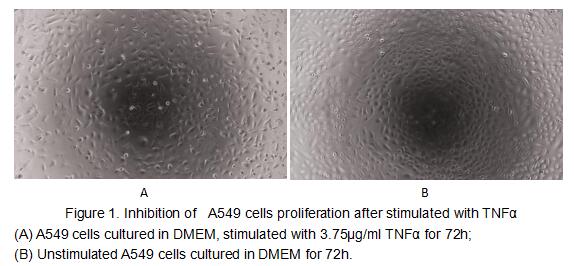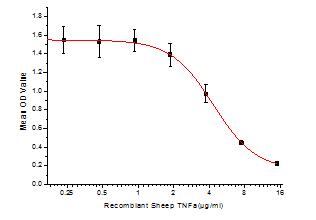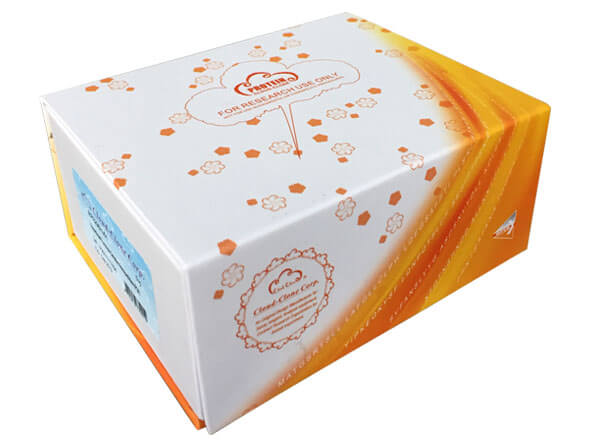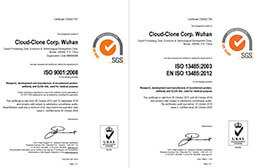Active Tumor Necrosis Factor Alpha (TNFa)
Cat# APA133Ov01-100ug
Size : 100ug
Brand : USCN
Active Tumor Necrosis Factor Alpha (TNFa)
DIF; TNF-A; TNFSF2; Cachectin; Tumor Necrosis Factor Ligand Superfamily Member 2
- Product No.APA133Ov01
- Organism SpeciesOvis aries; Ovine (Sheep) Same name, Different species.
- Buffer FormulationPBS, pH7.4, containing 0.01% SKL, 1mM DTT, 5% Trehalose and Proclin300.
- TraitsFreeze-dried powder
- Purity> 90%
- Isoelectric Point6.8
- ApplicationsCell culture; Activity Assays.
- Download Instruction Manual
- UOM 10µg50µg 200µg 1mg 5mg
ACTIVITY TEST of the Active Tumor Necrosis Factor Alpha (TNFa)

Tumor necrosis factor (TNF, tumor necrosis factor alpha, TNFα, cachexin, or cachectin) is a cell signaling protein (cytokine) involved in systemic inflammation and is one of the cytokines that make up the acute phase reaction. The primary role of TNF is in the regulation of immune cells. TNF, being an endogenous pyrogen, is able to induce fever, apoptotic cell death, cachexia, inflammation and to inhibit tumorigenesis and viral replication and respond to sepsis via IL1

Figure 2. Inhibition of A549 cells proliferation after stimulated with TNFα
USAGE of the Active Tumor Necrosis Factor Alpha (TNFa)
Reconstitute in 10mM PBS (pH7.4) to a concentration of 0.1-1.0 mg/mL. Do not vortex.
STORAGE of the Active Tumor Necrosis Factor Alpha (TNFa)
Avoid repeated freeze/thaw cycles. Store at 2-8°C for one month. Aliquot and store at -80°C for 12 months.
STABILITY of the Active Tumor Necrosis Factor Alpha (TNFa)
The thermal stability is described by the loss rate. The loss rate was determined by accelerated thermal degradation test, that is, incubate the protein at 37°C for 48h, and no obvious degradation and precipitation were observed. The loss rate is less than 5% within the expiration date under appropriate storage condition.






